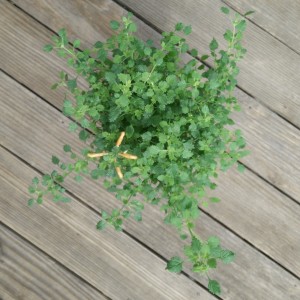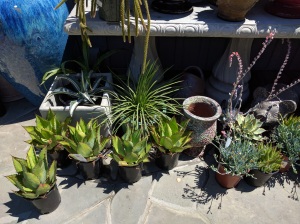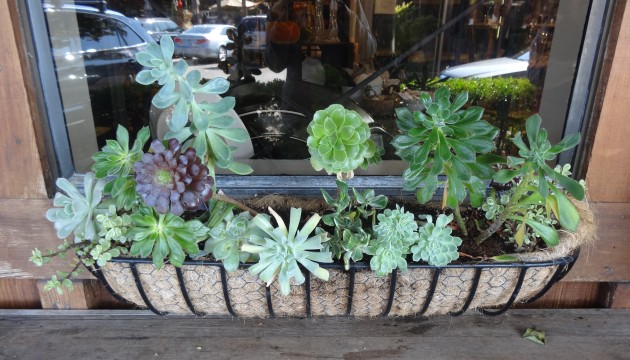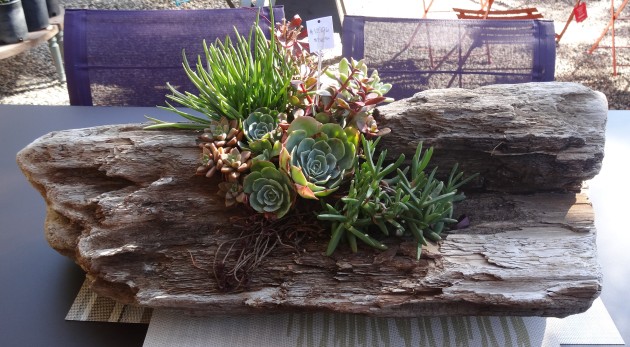In California, fall means rain, and rain means the best time to plant. Fall planting means bigger plants with more blooms in the spring and summer, and established plants that won’t die over the dry season. Last fall, I didn’t plant a thing. With El Nino coming, and hopefully rain this week, I am feeling a little more confident. Plus I have to get some things in the ground to fill in where everything died or all my dirt is going to wash away when the heavy rains hit.
Once again, I headed to my favorite nursery with a plant list and good intentions and once again I was completely derailed. In my defense, I did get the rosemary and they were out of Galvezia which has done well for me but has not bloomed yet. Here’s what else came home with me:


Cuphea ‘Strybing Sunset’ will be a 3’x3′ dense, shrubby perennial that can take a bit of shade. It’s supposed to be very easy to grow so we’ll see. Plus, the tiny adorable flowers have tiny, adorable, burgundy EARS. How could I not take this one home?

Leonotis menthifolia has the same flowers as leonotis leonuris, grows to a dense 3’x3′, and does not get woody at the base? Sign me up! These were kind of on the list – I needed something to fill in around a variegated agave.

Salvia splendens ‘Sao Borja’ This one is from Annie’s Annuals and I have no idea where it’s going but it’s amazing. It will grow quickly to 6′ tall, likes shade, and attracts hummingbirds, bees, and butterflies. SOLD.

Streptosolen jamesonii ‘Marmalade Bush’ According to Annie’s Annuals, this will be an easy to grow, year round flower covered hummingbird magnet. Right now it looks like this (above) but I’m hoping it’s going to look like this:



































